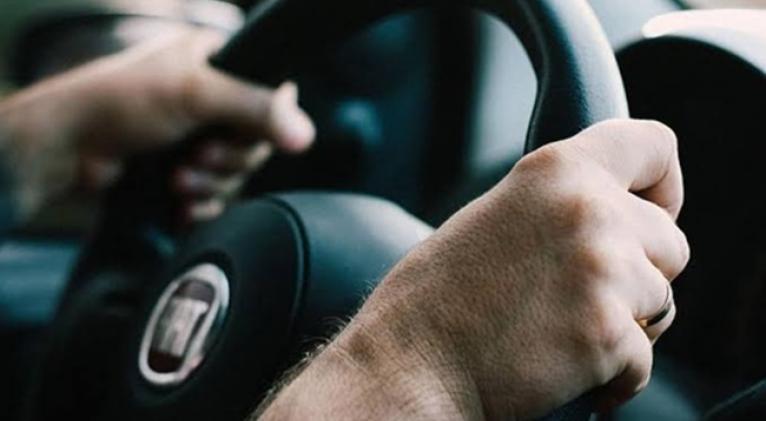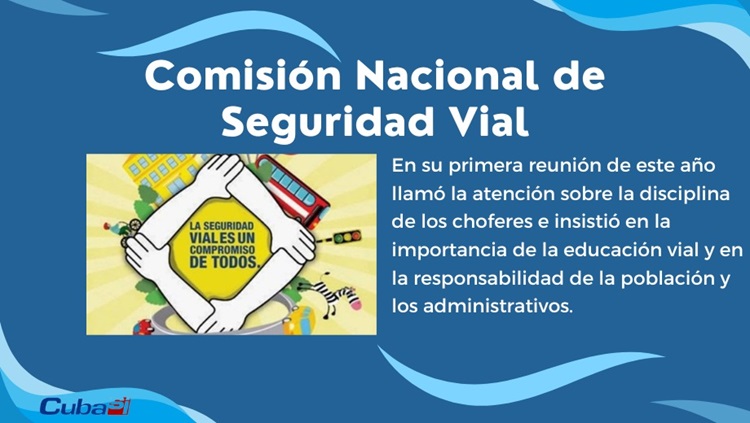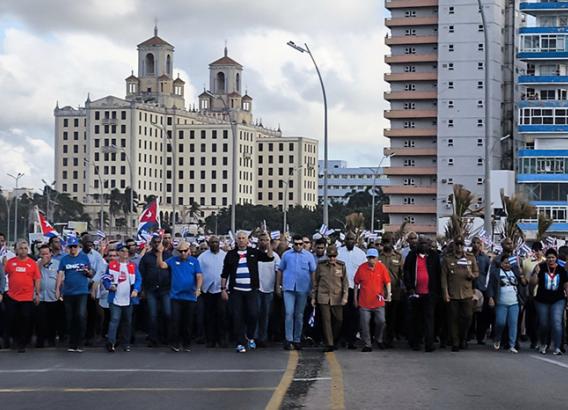Roadways: The Year Started Off Real Bad
especiales

Hundreds of Cubans are now suffering from the loss of a family member, or a loved one, or injuries due to traffic accidents, and at the time of writing these lines there were at least five mass accidents that have occurred on Cuban roads so far in 2005.
The most recent took place in Mayarí, where a tourist car crashed into a large metal pipe, leaving six dead, including a minor.
This accident plus another that also occurred on the same day and in the same municipality, we must add the massive accidents in Camagüey, Cienfuegos, and, the most shocking, the one that occurred in Morón, Ciego de Ávila, where two Yutong buses collided, one from the Union of Military Constructions (UCM) and another from Transmetro that was transporting tourism workers, on the road between the city of Morón and the Island of Turiguanó, which left seven dead and 59 injured.

This event was so devastating that the President of the Republic himself, Miguel Díaz-Canel Bermúdez, made his feelings known through the social network X: “Infinite sorrow for another terrible traffic accident, which steals lives and leaves injuries and destruction. My condolences goes to the families and friends of the victims.”
Precisely on that Monday, January 20, when that accident took place, the first meeting of the year of the National Road Safety Commission was held, where the main causes of accidents were determined to be failure to pay due attention to vehicle control, disrespect for the right of way and speeding.

At that meeting, chaired by Vice Prime Minister Jorge Luis Tapia Fonseca together with the head of Transportation, Eduardo Rodríguez Dávila, it was learned that last year had added lower numbers of accidents, injuries and deaths compared to 2023. But the numbers are not the only determining factor when a single human life is at stake.
And that was one of the ideas discussed at the meeting where Tapia Fonseca, in addition to calling for a critical analysis, commented that the functioning of the Road and Traffic Commission at the national and provincial level must be modified.
It happens that the discipline on the road of many drivers falls pretty short from what they should show, as well as road safety education and responsibility, both of the population and officials.

Unquestionably, the poor condition of the roads is also a problem, but in this regard Tapia pointed out that although it’s necessary to analyze this situation, it’s not the main cause of so many accidents.
The Minister of Transport has called for tangible actions, among them, an analysis with all drivers of the transport companies in the country together with the technical-advisory committees, the provincial transport directorates and the universities to deepen the causes and conditions that influence the accident rate.
Rodríguez Dávila indicates that a readjustment in the inspection plan for the year should be made, in addition to reviewing the capacities of the driving schools and driving license processing offices to prevent drivers from driving without this document.
He also calls for increased attention on the road. It’s a call that’s based on painful realities because 30% of the accidents occurred last year precisely because of not paying due attention to vehicle control, which is the first cause of traffic accidents in the country.

Disrespect for the right of way occupies a regrettable second place and is the behavior that accumulated the highest number of deaths last year, with 29.9% of a total of 7,507 people who lost their lives.
No Cuban is unaware of the increase in the number of motorcycles and scooters in circulation. Correspondingly, their participation in accidents has also increased.
Colonel Raúl Cano López, second in command of the specialized body for criminal investigation and common crime of the Ministry of Interior, points out that “A significant number of drivers of electric motorcycles without the corresponding driving license is identified, even drivers under age 16. Alterations in electrical systems to reach higher speeds and the use of non-approved helmets are other identified causes.”

For 2025
With a view to this year, the National Road Safety Commission calls, among other points, to:
- Identify with greater objectivity the factors that generate impunity.
- Increase controls and rigor against those demonstrations that generate indiscipline and are direct or indirect causes of accidents, deaths and injuries.
Illustrative photo: taken from elplural.com
- Prioritize the DWIs cases, violation of speed limits, do not respect the right of way, do not pay due attention to driving the vehicle or drive with vehicles in poor technical condition.
-Increase controls at transport bases in compliance with the established rules.
-Continue with actions to reduce the presence of loose livestock on the roads.
-Increase actions to repair and maintain signals in accordance with the availability of material resources.
The human factor continues to be the primary direct cause of each of the accidents, stressed Colonel Raúl Cano López, second in command of the specialized body for criminal investigation and common crime of the Ministry of Interior, at the meeting.

The Minister of Transport, Eduardo Rodríguez Dávila, in his Facebook profile, seemed to justify the title of this journalistic material when he referred to “a beginning of the year with numerous massive accidents with fatal consequences, something that demands greater attention from all of society, and especially from those of us who have responsibility for it.”
It would be of utmost importance that this exhortation from the Minister not just rolls around, like so many vehicles on streets and highways, but that it definitely steers all those related.

Translated by Amilkal Labañino / CubaSí Translation Staff














Add new comment